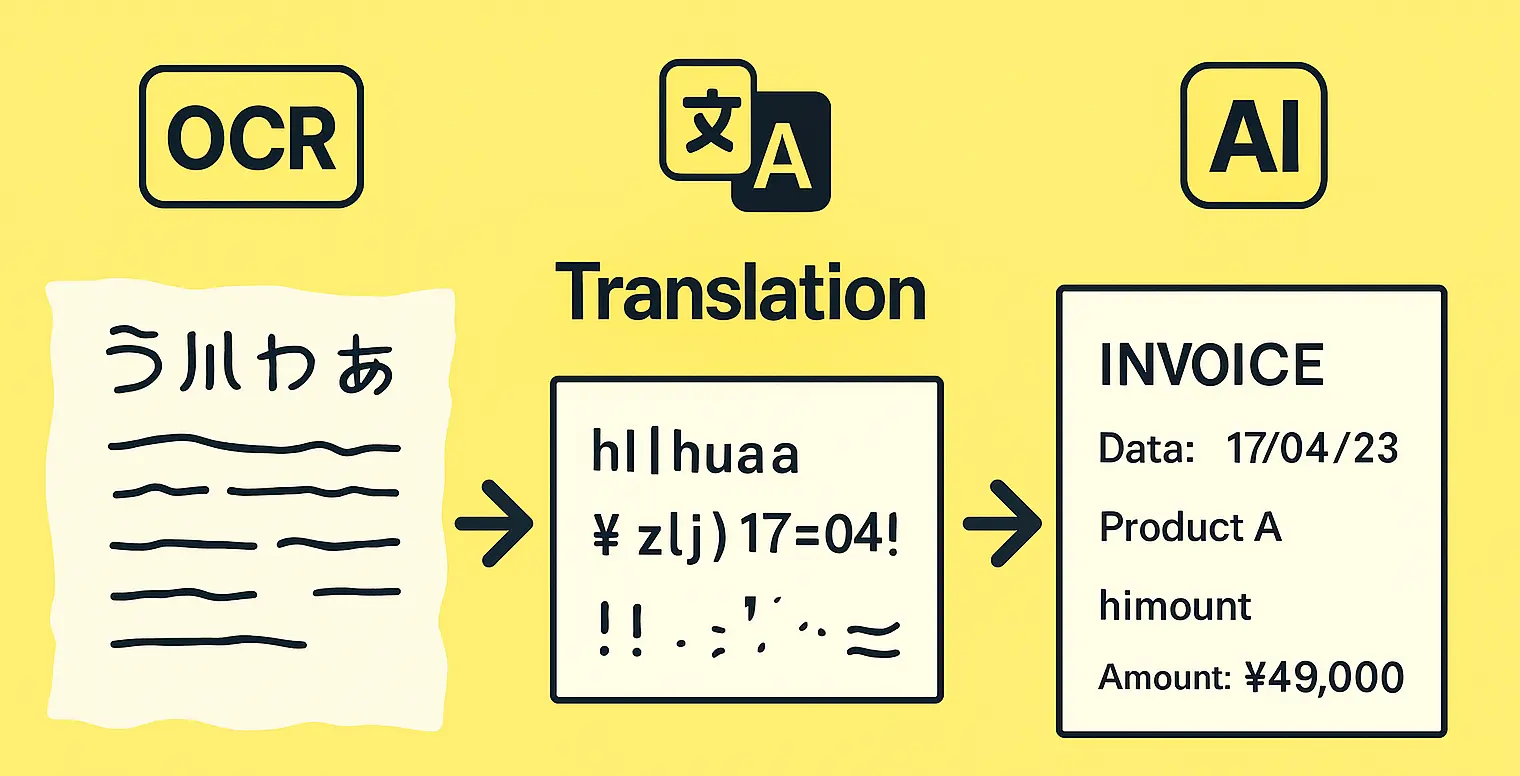
Why LLM OCR replaces outdated OCR and powers modern document automation.
Comparatives
Dernière mise à jour :
November 3, 2025
5 minutes
Imagine receiving a Japanese prescription and instantly reading it in English. Sounds like magic. But reality? Most OCR engines break down the moment layouts shift, a single character slips, or the translation tangles. Without AI to hold the structure together, every misread character becomes a cascading error. In the end, it’s your invoices, contracts, or KYC documents paying the price.
OCR and machine translation aren’t enough: without AI, errors, delays, and costs explode. Discover how to make your multilingual documents reliable.
OCR reads. Translation translates. But together? They collapse. OCR spits out broken text: missing accents, shattered columns, glued words. Translation just piles those errors higher, and you end up with an unreadable invoice or a contract stripped of meaning.
Take a concrete case: a Japanese invoice. The “円” (yen) symbol is misread as a plain “y.” Result? 100,000 ¥ becomes “100,000”… with no currency, useless in an ERP. Or an IBAN shortened by one digit after OCR — instantly blocking an international payment.
That’s exactly what happens when OCR and translation are chained blindly. OCR has no context, translation has no safety net. Two bricks without cement never make a wall: you need intelligence in between to stabilize before translating.
A traditional OCR can read — but step outside Latin script and it stumbles. Right-to-left reading (Arabic, Hebrew), composite characters (Chinese, Japanese), or jargon packed with abbreviations: the tool gets confused, mixes content, and the document workflow collapses.
Example: an Arabic invoice. Amounts appear reversed, totals merge with notes, and the ERP rejects it. A single inverted digit can invalidate an invoice and trigger a dispute with a foreign supplier.
The problem is raw OCR doesn’t understand. It just lines up signs with no logic. AI restores order: putting numbers back in columns, reconstructing reading direction, and delivering text ready for translation without hours of manual review.

Relying only on OCR and translation is like handing a job to two workers who never speak. One mismeasures, the other builds crooked. Result? The wall collapses.
AI changes everything: it catches context, spots pitfalls, and restructures before translating. Numbers go into the right columns, currencies are recognized, sentences preserve their business logic.
This means fewer errors, less proofreading, and — most importantly — documents ready to use the moment they arrive, whether in Japanese, Arabic, or Russian.
An invoice processed wrong isn’t just a messy line: it’s a blocked payment, a late fee, and hours wasted fixing it. With AI-powered OCR + translation, the file comes out clean, structured, and ERP-ready.
In healthcare, reviewing a patient file in Russian or Arabic can take half a day from a doctor. Worse: a mistranslation can delay treatment. AI restructures and translates instantly, giving clinicians reliable data at once.
In banking and insurance, a misread KYC document in Spanish means three back-and-forths with a client, sometimes a lost account opening. With AI, fields are extracted right the first time — cutting friction and securing compliance.
Multilingual document automation isn’t a luxury anymore — it’s a necessity. OCR alone isn’t enough, translation alone isn’t either. Without AI to reconcile them, you pile up errors and frustration. The takeaway is clear: multilingual automation isn’t optional. Without AI, your documents may speak many languages… but none you can use.
“Two bricks without cement don’t make a wall: OCR and translation without AI collapse.”
Move to document automation
With Koncile, automate your extractions, reduce errors and optimize your productivity in a few clicks thanks to AI OCR.
Resources

Why LLM OCR replaces outdated OCR and powers modern document automation.
Comparatives

Three complementary approaches to document fraud detection software, from image forensics to AI-powered consistency checks on financial documents.
Comparatives

Comparison of five OCR tools for healthcare automation, plus upcoming AI assistants and how to choose.
Comparatives